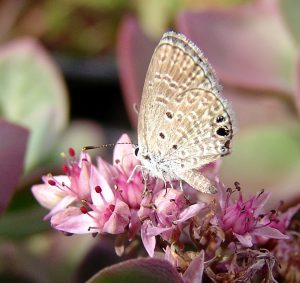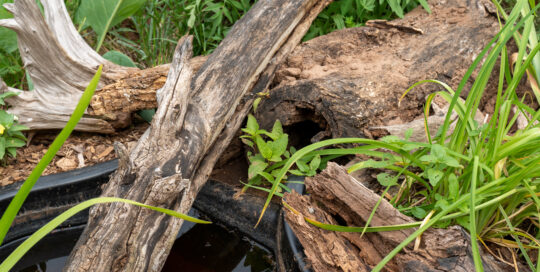Butterflies on the Move
Views: 7064

The Butterflies of Oklahoma, Kansas, and Texas Facebook group has been buzzing with record sightings this week. People have been seeing Southern U.S./Mexican butterflies far north of their usual ranges. Some of the species seen include Large Orange Sulphur, Orange-barred Sulphur, Tailed Orange, Brazilian Skipper, Caraunus Blue, and a Common Mestra in north Texas.
In my yard today, I saw a Tailed Orange and a Caraunus Blue (see photo). At least one may be a county record.
It’s difficult to know for certain why so many immigrants are flying north this year, but strong winds from the south may be responsible. It is very unusual. Many butterfly species migrate. Monarchs are a well-known example of this, flying south for winter. But these butterflies are out of their ranges to the north, in November, when, historically, it is not unusual to get freezing temperatures in many of these locations.
Butterflies may migrate to find better habitat and food sources, or they may travel to avoid harmful weather, for example, too much rain, cold, or drought. Sometimes they’ll be blown out of their usual territories by storms.
My yard has not experienced a freeze yet, and I have many flowers still blooming, thanks to Osmocote: Salvia greggii, Chrysanthemums, Lantana, Gomphrena, and Cowpen Daisies. It may be that these southern butterflies are finding warm temperatures and more favorable circumstances farther north than normal this year. Whatever the case, I’m very excited to see some new visitors.
If you still have nectar plants blooming in your yard, you might keep an eye out for any unusual butterflies. If you are unfamiliar with a species, you can snap a photo and post it the Butterflies and Moths of North America website. They will identify the species for you.
Meet Leslie Miller
Leslie Ann Miller shares 3.5 acres in rural Oklahoma with birds, butterflies and wide variety of animals. She is currently transforming her yard with plantings…
Leslie's Recent Posts

Creating microclimates and microhabitats to benefit wildlife






